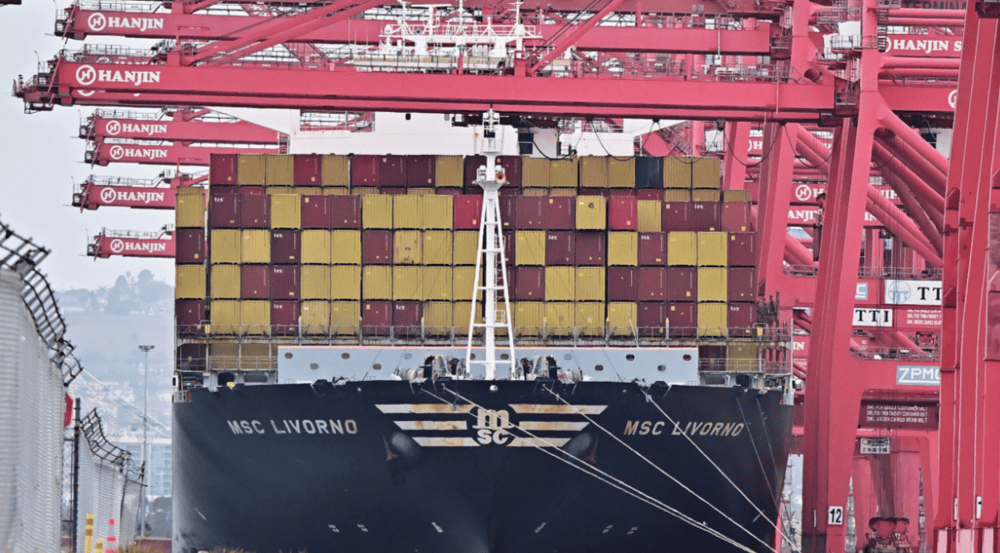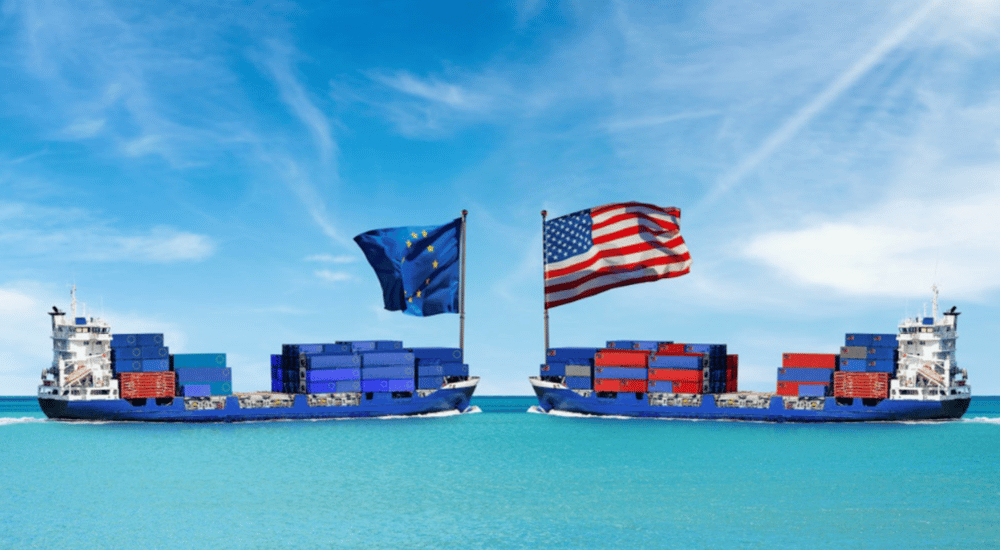U.S.–EU Trade Talks Harden: 10% Reciprocal Tariff Baseline Fuels Eurozone Export Uncertainty
European Union trade officials are increasingly accepting a 10% baseline on reciprocal tariffs as the new reality in negotiations with the United States. Multiple sources close to the matter confirm that U.S. negotiators, under the leadership of Commerce Secretary Howard Lutnick, have made it clear that any final deal must include a floor tariff of no less than 10% on EU goods entering the U.S. market.
This stance marks a significant escalation in U.S. trade policy under President Donald Trump, aimed at correcting the goods trade deficit with the EU — a long-standing friction point in transatlantic relations. The proposed tariff structure could have lasting consequences for Eurozone exporters, supply chains, and currency markets.
Strategic Shift in Tariff Policy and Economic Implications
The insistence on a minimum 10% reciprocal tariff marks a departure from prior U.S. commitments to free trade under multilateral frameworks. Instead, it signals a pivot toward a transactional, bilateral model that emphasizes nominal trade balance corrections over complex value-added trade structures.
The European Union, which exported over $500 billion worth of goods to the U.S. in 2024, now faces the prospect of pricing pressures, supply chain adjustments, and weakened competitiveness across sectors including automotive, industrial machinery, chemicals, and consumer electronics. German, French, and Dutch exporters are particularly exposed due to their high U.S.-bound trade volumes.
If implemented, the new baseline would reverse decades of transatlantic tariff reductions and could spark retaliatory measures, further fragmenting global trade. Additionally, such a regime could set a precedent, influencing how other trade partners, particularly China and Japan, approach their bilateral frameworks with Washington.

Quick Facts
🇺🇸 U.S. Commerce Secretary Lutnick: No tariffs below 10% on EU goods.
📉 EU’s annual goods surplus with the U.S.: approx. $200 billion.
🏭 Key affected sectors: automobiles, aerospace, agriculture, chemicals.
🇪🇺 EU policymakers increasingly consider 10% as the default floor.
💱 Euro (EUR) under pressure due to uncertainty in export outlook.
Market Reactions and Policy Commentary: Tariff Risks Reprice Eurozone Assets
Markets have begun to reprice Eurozone risk as the likelihood of entrenched tariffs increases. The euro (EUR) weakened modestly against the U.S. dollar (USD) following reports of negotiation deadlock, with EUR/USD falling toward multi-month lows amid fears of export-driven GDP headwinds.
Meanwhile, European equities, particularly industrials and automakers within the Stoxx Europe 600 (SXXP), posted mild declines as investors assessed earnings risk under the new tariff paradigm. Analysts warn that if tariffs are imposed without sector-specific carve-outs, margin compression across EU multinationals could accelerate.
Brussels is reportedly preparing countermeasures, including targeted tariffs and subsidies for affected industries, while diplomatic channels remain open in hopes of a compromise. However, the tone from Washington suggests little room for deviation from the 10% benchmark — reinforcing concerns that strategic decoupling, rather than convergence, is becoming the new normal in U.S.–EU trade.

Key Points
10% Tariff as a Baseline: The U.S. is no longer considering rates below this threshold.
Structural Trade Shift: A clear move away from multilateralism toward bilateral trade friction.
Sectoral Impact: German and French exporters face immediate pricing and demand risk.
Currency Volatility: The EUR has softened against the USD amid trade disruption fears.
Policy Countermoves: The EU may deploy retaliatory tariffs or industrial subsidies.
A Trade Recalibration with Global Ripple Effects
The institutionalization of a 10% reciprocal tariff rate in U.S.–EU trade talks represents a tectonic shift in the global trading system. While framed as a strategy to rebalance trade deficits, the policy risks undermining decades of integrated supply chains and synchronized economic planning between two of the world’s largest economic blocs.
With tariff rates now likely to become politically fixed, businesses and investors must recalibrate their expectations for long-term transatlantic commerce. The fallout may extend beyond trade to broader areas of geopolitical cooperation — including standards, regulatory alignment, and climate-linked trade provisions.
The imposition of these tariffs could mark the beginning of a more fractured, nationalist approach to global trade where reciprocal no longer means balanced — but rather, enforced parity on paper, regardless of economic complexity.















Comments
Forward-leaning capital decisions are fueling disruptive growth across automation sectors